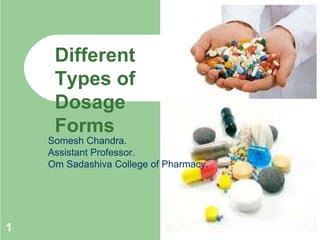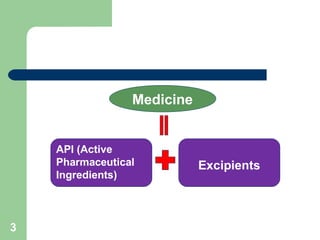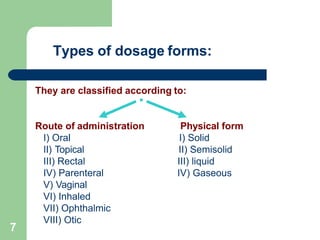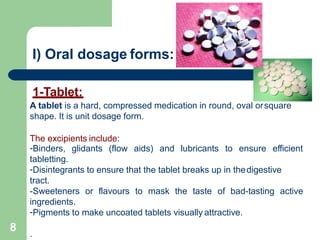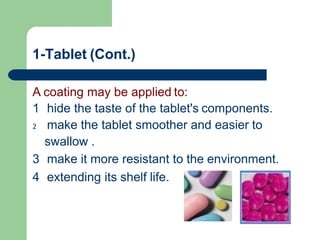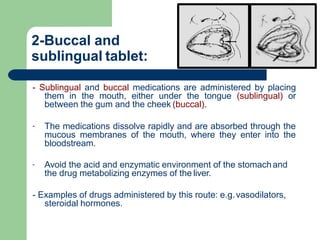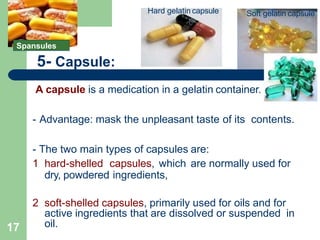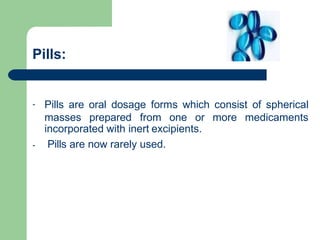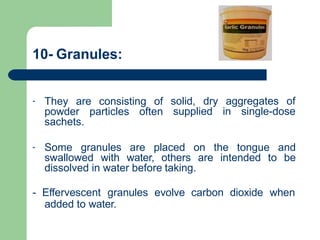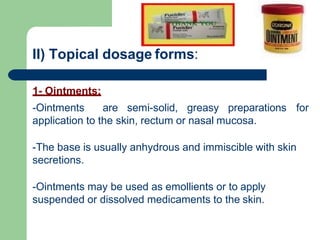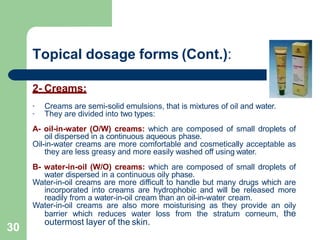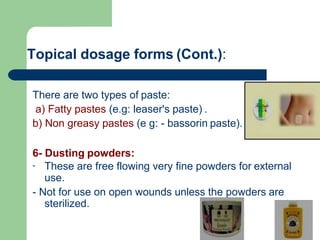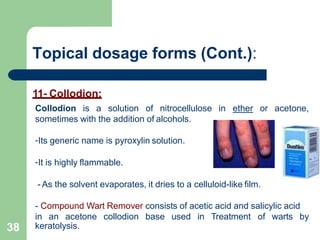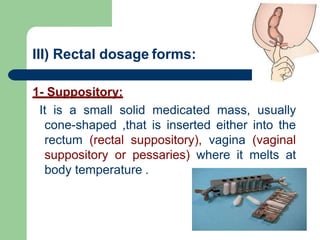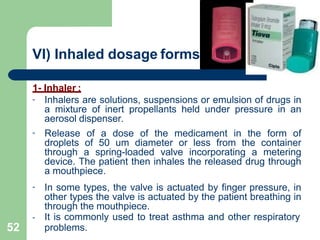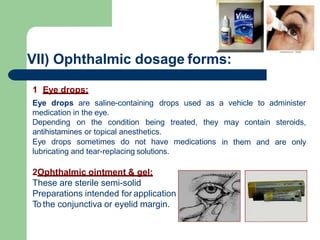This document discusses different types of dosage forms used to deliver drug molecules to sites of action in the body. It defines dosage forms and outlines their need for accurate dosing, protection, taste masking, sustained/controlled release, and optimal drug action. It then classifies dosage forms based on physical form (solid, semisolid, liquid, gaseous) and route of administration (oral, topical, rectal, parenteral, etc). Various oral dosage forms are described including tablets, capsules, liquids, and others. Topical, rectal, vaginal, parenteral, and inhaled dosage forms are also outlined.
